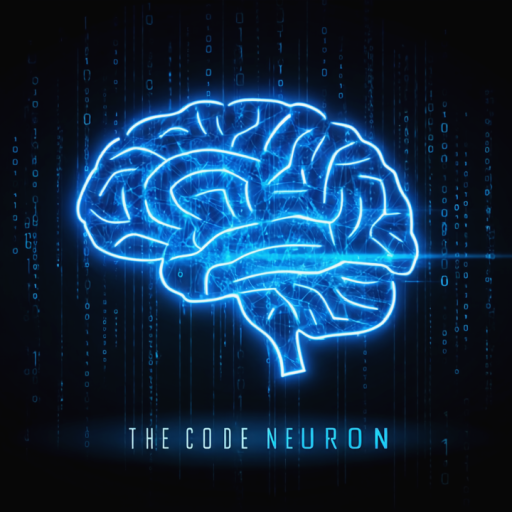In today’s digital world, data is everywhere. From the websites we browse to the applications we use, massive amounts of information are constantly being generated and processed. But how is all this data organized, managed, and made accessible? The answer lies in databases.
This blog post will guide you through the fundamental concepts of databases and Relational Database Management Systems (RDBMS), laying the groundwork you need to understand and even start learning SQL (Structured Query Language).
What Exactly is a Database?
At its core, a database is a structured collection of data that is organized for easy access, management, and updating. Think of it like a highly organized filing cabinet. Instead of random papers scattered everywhere, related information is grouped together, labeled clearly, and stored in a systematic way.
Key characteristics of a database:
- Organized Data: Information is structured in a specific format to allow for efficient searching and retrieval.
- Related Information: Data within a database typically pertains to a particular subject or purpose.
- Accessibility: Databases provide methods for users or applications to access and manipulate the stored data.
- Persistence: Data stored in a database is generally persistent, meaning it remains stored even when the system is turned off.
Types of Data: Shaping the Database
The way data is structured significantly impacts how it’s stored and managed in a database. We can broadly categorize data into three main types:
- Structured Data:
- Definition: Structured data is highly organized and conforms to a predefined schema (a blueprint that dictates the format and types of data). It fits neatly into rows and columns, making it ideal for relational databases.
- Characteristics:
- Predefined format and length.
- Easy to search, sort, and analyze.
- Follows a clear and consistent structure.
- Examples: Customer names, addresses, phone numbers, dates, product information (name, price, ID), financial transaction details. Think of spreadsheets or tables in a database.
- Semi-structured Data:
- Definition: Semi-structured data doesn’t adhere to a rigid schema but has some organizational properties that make it easier to analyze than unstructured data. It often uses tags or markers to separate semantic elements and enforce hierarchies of records and fields within the data.
- Characteristics:
- Contains tags or markers to delineate data elements.
- Schema is not fixed and can vary within the same type of data.
- Easier to parse and analyze than unstructured data but requires more effort than structured data.
- Examples: XML (Extensible Markup Language) documents, JSON (JavaScript Object Notation) files, CSV (Comma Separated Values) files (to some extent), email messages (with headers and body).
- Unstructured Data:
- Definition: Unstructured data does not have a predefined format or organization. It’s often rich in content but difficult to analyze directly in its raw form.
- Characteristics:
- No predefined schema or format.
- Difficult to search and analyze directly.
- Requires preprocessing to extract meaningful information.
- Examples: Text documents, images, audio files, video files, social media posts, sensor data.
Enter the RDBMS: Managing Structured Data
While the term “database” is broad, when people talk about databases in the context of learning SQL, they are usually referring to Relational Database Management Systems (RDBMS).

What is an RDBMS?
An RDBMS is a software system used to manage and organize data within a relational database. A relational database is a type of database that structures data into one or more tables, where each table consists of rows (records) and columns (fields or attributes). The tables are related to each other through defined relationships, allowing for efficient data retrieval and manipulation.
Key components and concepts of an RDBMS:
- Tables (Relations): The fundamental building blocks of a relational database. Each table holds data about a specific entity (e.g., customers, products, orders).
- Rows (Records or Tuples): Each row in a table represents a single instance of the entity (e.g., a specific customer, a particular product).
- Columns (Fields or Attributes): Each column represents a specific characteristic or attribute of the entity (e.g., customer name, product price, order date).
- Schema: The overall design of the database, including the tables, columns, data types, and relationships between tables.
- Primary Key: A column or a set of columns in a table that uniquely identifies each row in that table (e.g., CustomerID, ProductID).
- Foreign Key: A column or a set of columns in one table that references the primary key of another table. Foreign keys establish and enforce relationships between tables (e.g., an Order table might have a CustomerID as a foreign key referencing the primary key in the Customers table).
- Relationships: Associations between tables, typically established through primary and foreign keys. Common types of relationships include:
- One-to-One: One record in table A is related to at most one record in table B.
- One-to-Many: One record in table A can be related to zero, one, or many records in table B.
- Many-to-Many: Many records in table A can be related to many records in table B (often implemented using a junction table).
Popular RDBMS Software:
There are many popular RDBMS software systems available, both open-source and commercial. Some common examples include:
- MySQL: A widely used open-source RDBMS.
- PostgreSQL: Another powerful and open-source RDBMS, known for its extensibility and compliance.
- Oracle Database: A commercial RDBMS known for its robustness and features.
- Microsoft SQL Server: A commercial RDBMS developed by Microsoft.
- SQLite: A lightweight, file-based RDBMS often embedded in applications.
Why RDBMS and SQL are Essential for Data Science
For aspiring Data Scientists, a solid understanding of databases, especially RDBMS, and proficiency in SQL are not just beneficial – they’re non-negotiable. Here’s why:
- Data Source Foundation: A vast majority of the world’s structured data, which forms the backbone of many data science projects, resides in relational databases. Whether it’s customer transactions, sales records, or sensor data, you’ll constantly encounter RDBMS as your primary data source.
- Data Extraction & Cleaning: Before you can build models or perform analysis, you need to extract and often pre-process data. SQL is your go-to language for:
- Filtering: Selecting specific rows based on criteria.
- Aggregating: Summarizing data (e.g., calculating averages, sums).
- Joining: Combining data from multiple tables.
- Transforming: Reshaping data to fit your analytical needs. This “data wrangling” is a significant part of a Data Scientist’s job, and SQL makes it efficient.
- Understanding Data Structure: Learning RDBMS teaches you how data is logically organized and how different pieces of information relate to each other. This understanding is critical for designing effective queries and interpreting your analytical results accurately.
- Feature Engineering: Often, you’ll need to create new features for your machine learning models from existing raw data. SQL is powerful for generating these features directly within the database, saving computation time and resources in other tools.
- Collaboration with Data Engineers: Data Scientists often work closely with Data Engineers who build and maintain data pipelines. A strong understanding of databases and SQL fosters effective communication and collaboration, ensuring smooth data flow for your projects.
- Scalability: When dealing with massive datasets, directly querying a database using SQL is often the most performant way to access and manipulate data, rather than pulling everything into memory.
In short, SQL is the lingua franca (common language) of data. Mastering it allows you to speak directly to your data, extract insights, and lay the groundwork for more advanced statistical modeling and machine learning.
The Importance of SQL
Now we arrive at SQL (Structured Query Language). SQL is the standard programming language for managing and manipulating data in relational databases. It allows you to:
- Retrieve data: Ask specific questions about the data stored in the database (e.g., “List all customers from Mydukur”).
- Insert new data: Add new records into tables.
- Update existing data: Modify the data in existing records.
- Delete data: Remove records from tables.
- Define the database structure: Create, modify, and delete tables and their schemas.
- Control access to data: Manage user permissions and security.
Learning SQL is the key to interacting with most modern databases used in web applications, business intelligence, data analysis, and many other fields.
Your First Steps into the World of Databases
Understanding the fundamental concepts discussed in this blog post is your crucial first step in learning about databases and RDBMS, and ultimately, SQL. As you continue your journey, you’ll delve deeper into:
- Database design principles: How to create efficient and well-structured databases.
- SQL syntax and commands: Mastering the language to interact with data.
- Database normalization: Techniques to reduce data redundancy and improve data integrity.
- Advanced SQL concepts: Joins, subqueries, stored procedures, and more.
The world of databases is vast and essential in today’s technology landscape. By grasping these basics, you’ve taken a significant leap towards understanding how data is managed and unlocking the power of SQL.
Get ready! In our next blog post, we’ll begin our hands-on journey with Microsoft SQL Server (MSSQL), diving into practical commands and setting up your first database. Stay tuned!

Leave a Reply
You must be logged in to post a comment.